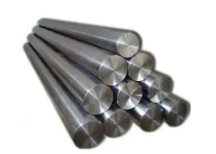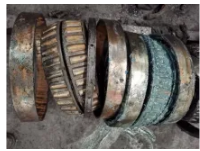
Load conditions: The magnitude of the rolling force, the frequency and intensity of the impact load are decisive factors, especially in heavy-load and high-speed conditions.
Material selection: The material properties of bearings have a direct impact on their fatigue life. The hardness, strength, toughness, wear resistance, corrosion resistance and internal stress state of the material all affect the performance and service life of the bearings.

Design and manufacturing: The internal factors of bearings, such as structural design and processing and manufacturing accuracy, have a significant impact on their service life. For instance, in heavy-load and low-speed applications, the load-bearing capacity needs to be fully considered, while in high-speed and light-load conditions, emphasis should be placed on accuracy and structure.
Installation and coordination
Interference fit: Insufficient interference fit can cause fretting wear. Excessive interference will cause the rings to expand, reduce clearance, and even lead to cracking of the rings. In cases where frequent and quick installation and disassembly are required, it is necessary to fully consider the convenience of installation and issues such as damage caused by the bearing structure.
Centering accuracy: The centering error of the roll system will cause the bearings to bear additional bending moments, resulting in eccentric loading and a sharp reduction in fatigue life. For instance, for a six-roll cold rolling mill, it is necessary to regularly inspect and maintain the roll system and the window of the rolling mill frame to restore accuracy.
Lubrication condition
Oil selection: High-quality lubricating oil with extreme pressure, anti-wear, anti-oxidation, good cooling and water resistance properties must be used. In addition to the initial selection, it is necessary to reasonably choose the type and grade of oil based on the working conditions and environment, such as lubricating grease, No. 3 in summer and No. 2 in winter.
Cleanliness: If water, oxide scale or abrasive particles and other contaminants are mixed into the oil, it will greatly accelerate wear and fatigue.

Sealing performance: The working environment of rolling mill bearings is usually harsh and prone to contamination. Therefore, the sealing performance of bearings is of great significance. Poor sealing may allow contaminants to enter the interior of the bearing, disrupt the lubrication conditions, and accelerate the wear and fatigue of the bearing.
Working environment: The working environment of bearings, such as temperature, humidity, and the presence of corrosive media, will all have an impact on their fatigue life. For instance, in the pickling workshop, the leakage of acid increases the risk of corrosion and rusting of bearings.

Regular inspection: Check the clearance, fit condition and surface damage of the bearings. Replace in a timely or regular and quantitative manner. Condition monitoring: By applying techniques such as vibration analysis and oil analysis, early signs of bearing failure can be detected in advance to prevent catastrophic failure.

Summary
The fatigue characteristics of rolling mill bearings can be summarized as: a compound fatigue caused by the mutual coupling and mutual promotion of multiple mechanisms such as mechanical cyclic fatigue, fretting wear, thermal fatigue and lubrication failure under extreme heavy load, high temperature, multiple pollution and complex stress conditions. Its failure is often not caused by a single factor, but rather a concentrated manifestation of problems in multiple links throughout the entire chain, including design, manufacturing, installation, use and maintenance. Therefore, to enhance the fatigue life of rolling mill bearings, a systematic approach must be adopted, starting simultaneously from multiple aspects such as optimizing bearing selection and design, ensuring precise installation, strengthening lubrication and sealing management, and implementing scientific predictive maintenance.